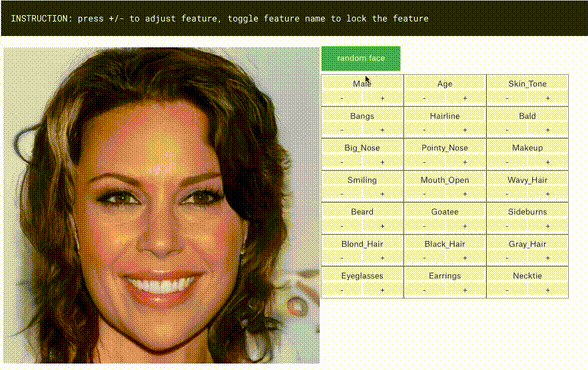
- Top free age regression software downloads. DataFitting is a powerful statistical analysis program that performs linear and nonlinear regression analysis (i. CurveFitter program performs statistical regression analysis to estimate the values of parameters for linear, multivariate, polynomial, exponential and nonlinear functions.
- Considering the expensive cost of collecting paired datasets, CAAE (Conditional Adversarial Autoencoder) is designed for face aging task without paired samples and first achieves face age.
- Consisting of three modules – face detection, discriminative manifold learning, and multiple linear regression – the researchers' age-estimation software was trained on a database containing photos.
All of our face and age lifestyle products inspire and engage customers through the use of powerful age progression technology encouraging behavioral change. Here you can access effects that show the ageing process alongside different habits including drinking, smoking, tanning, diet, exercise, stress, drugs and combinations thereof. 'APRIL® Face Aging software is a crowd-pulling prop to inform smokers and non-smokers about the impact of smoking on premature and excessive wrinkling of the skin. APRIL's magic lies in personalising the message by aging the face of the person sitting in front of you. It is a great motivational tool and works particularly well with young women.
'Our extensive user studies demonstrated age progression results that are so convincing that people can’t distinguish them from reality,' says Steven Seitz. 'When shown images of an age-progressed child photo and a photo of the same person as an adult, people are unable to reliably identify which one is the real photo.' (Credit: Scott Sherrill-Mix/Flickr)
New age-progression software generates images of a young child’s face as it ages through a lifetime, and does so in less than a minute.
The new technique is the first that works with variable lighting, expressions, and poses, researchers say.
“Aging photos of very young children from a single photo is considered the most difficult of all scenarios, so we wanted to focus specifically on this very challenging case,” says Ira Kemelmacher-Shlizerman, assistant professor of computer science and engineering at the University of Washington.
“We took photos of children in completely unrestrained conditions and found that our method works remarkably well.”
The research team has posted a paper on the new technique and will present its findings at the June IEEE Computer Vision and Pattern Recognition conference in Columbus, Ohio.
Thousands of faces
The shape and appearance of a baby’s face—and variety of expressions—often change drastically by adulthood, making it hard to model and predict that change. The new technique leverages the average of thousands of faces of the same age and gender, then calculates the visual changes between groups as they age to apply those changes to a new person’s face.
[related]
More specifically, the software determines the average pixel arrangement from thousands of random internet photos of faces in different age and gender brackets.
An algorithm then finds correspondences between the averages from each bracket and calculates the average change in facial shape and appearance between ages. The changes are then applied to a new child’s photo to predict how he will appear for any subsequent age up to 80.
Real or not?
The researchers tested their rendered images against those of 82 actual people photographed over a span of years. In an experiment asking random users to identify the correct aged photo for each example, they found that users picked the automatically rendered photos about as often as the real-life ones.
“Our extensive user studies demonstrated age progression results that are so convincing that people can’t distinguish them from reality,” says coauthor Steven Seitz, professor of computer science and engineering. “When shown images of an age-progressed child photo and a photo of the same person as an adult, people are unable to reliably identify which one is the real photo.”
Photo Age Regression Software Free
Real-life photos of children are difficult to age-progress, partly due to variable lighting, shadows, funny expressions, and even milk moustaches. To compensate for these effects, the algorithm first automatically corrects for tilted faces, turned heads, and inconsistent lighting, then applies the computed shape and appearance changes to the new child’s face.
Missing children images
Perhaps the most common application of age progression work is for rendering older versions of missing children. These renderings usually are created manually by an artist who uses photos of the child as well as family members, and editing software to account for common changes to a child’s face as it ages, including vertical stretching, wrinkles, and a longer nose.

But the process takes time, and it’s significantly harder to produce an accurate image for children younger than age 5, when facial features more closely resemble that of a baby.
The automatic age-progression software can run on a standard computer and takes about 30 seconds to generate results for one face. While the method considered gender and age, the researchers hope to incorporate other identifiers such as ethnicity, and cosmetic factors such as hair whitening and wrinkles to build a robust enough method for representing every human face.
“I’m really interested in trying to find some representation of everyone in the world by leveraging the massive amounts of captured face photos,” Kemelmacher-Shlizerman says. “The aging process is one of many dimensions to consider.”
Facial Age Regression Software
Google and Intel Corporation funded the research.
Source: University of Washington
Age-progression photos are widely used by investigators to located missing persons and hunt for wanted fugitives.
TheNational Center for Missing & Exploited Children have successfully used age progressed photos to reunite long-term missing children with their families. The success they’ve experienced has been has crossed over into law enforcement organizations like the United States Marshals Service who are tasked with tracking down some of our nation’s most violent criminals.
Civil attorneys also use age-progressed images during wrongful death lawsuits to show how their clients might have appeared if they lived a full-life.
Other individuals request age-progressed images of missing & deceased family members to provide them hope and comfort.

Forensic Facial Imaging Expert and IAI Certified Forensic Artist Michael W. Streed has over 200 hours of specialized training in age progression from the National Center for Missing and Exploited Children. He uses traditional illustration techniques blended with photo editing software to create powerful images that seek to pay respect to those missing & lives lost too soon.
Requirements:
- Most up-to-date, scanned portrait-style photograph. Note: Fugitive Investigators should provide as much lifestyle or medical information as legally allowed.
- Include photographs of bloodline siblings or parents taken at, or near the age as the missing/deceased person.
- Scanned photographs should be a minimum of 5 x 7 inches in size at 300-600 dpi resolution. Multiple or oversized photos should be sent via SketchCop®’s WeTransfer service.
- SketchCop® WILL NOT accept original photographs.
Facial Age Progression Software
Note: There is no guarantee the completed image will be an ‘exact likeness’ of the missing or deceased person. The image should only be considered an “approximation” only.
If you need an age-progression photo, please use the request form on the right-side of the screen.